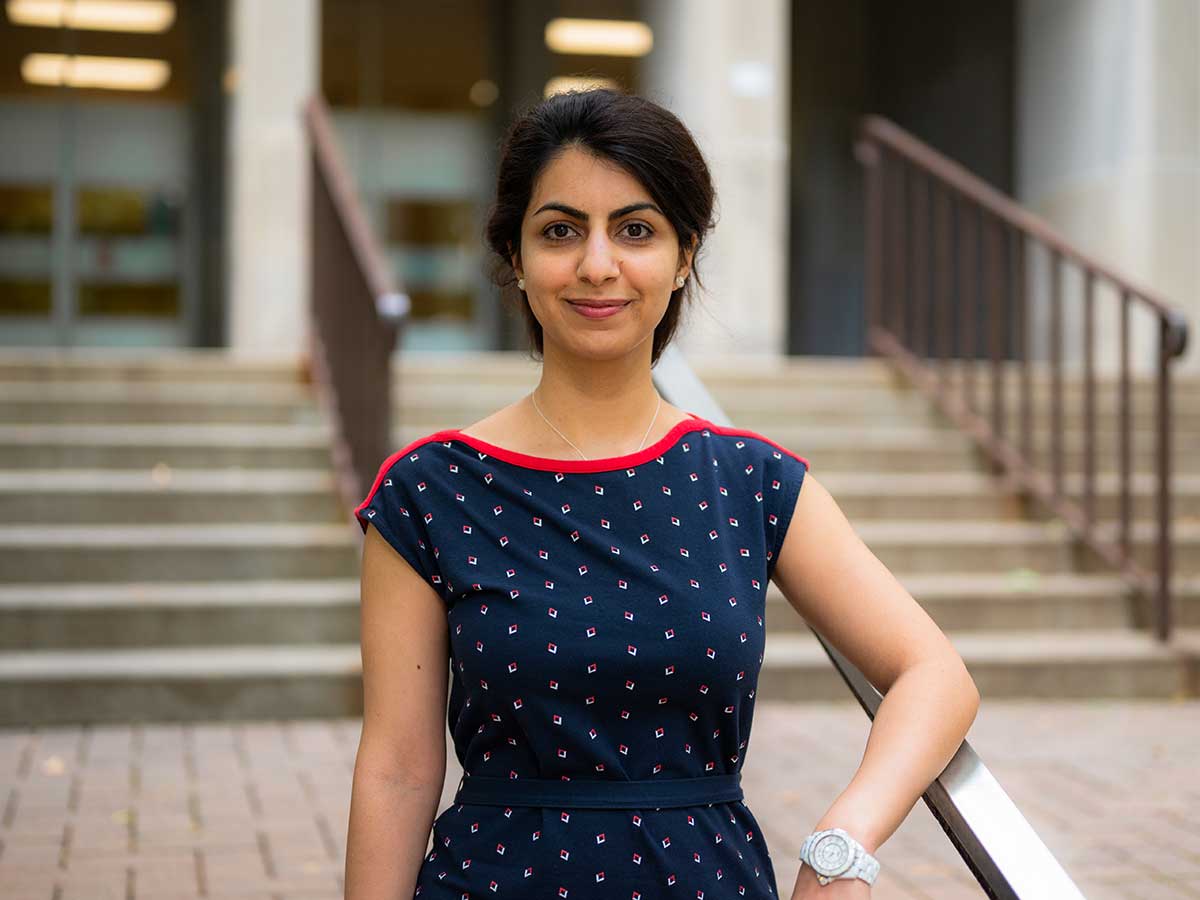Promoting industrial innovation using geometric computing
Research by computer scientist is positively impacting diverse sectors

At her Geometric Computing Lab (opens in new window) , professor Yeganeh Bahoo is finding answers to geometric and numeric problems that can help drive innovation in wireless communication, robotics, additive manufacturing, virtual reality, computer graphics and surveillance.
She and her team produce knowledge with a distinct industrial purpose, such as refining computer-aided design software to enhance manufacturing processes or building robots that can more effectively perform functions in spaces that are too small or hazardous for humans.
“I’m trying to construct a complete pipeline from theory to application,” says the computer scientist. “We want to figure out what computational geometry theory is lacking that industry needs to progress.”
These are highly collaborative and interdisciplinary projects involving researchers from other disciplines at TMU and other universities, along with leaders of local businesses in the manufacturing and digital sectors. Among her current partners is Windsor-based CAMufacturing—Bahoo is helping the globally operating firm optimize its software for additive manufacturing, which is similar to 3D printing.
Bahoo also works in visibility, an area of computational geometry that can help to usher in next-generation simple robots. “Bouncing Robots in Rectilinear Polygons (external link, opens in new window) ,” a study she conducted with the University of Oulu in Finland that was published last year in IEEE Xplore, reveals a smart strategy for a mobile robot with just one bit of memory that can successfully traverse all the rooms of a 2D environment.
Presenting on the topic of visibility theory and application at the 2022 winter meeting of the Canadian Mathematical Society, Bahoo explained her aim to extend the reach and relevance of computational geometry across diverse domains.
“What we are doing is building theories, but not just leaving it there,” says Bahoo, whose team also helped organize the 34th Canadian Conference on Computational Geometry, which TMU hosted in August. “We are exploring how we can use these theories to solve real-world problems and make a meaningful difference in the industrial sector.”
From collision detection for Roombas to route planning for search-and-rescue scenarios, the applications of computational geometry are immensely diverse.